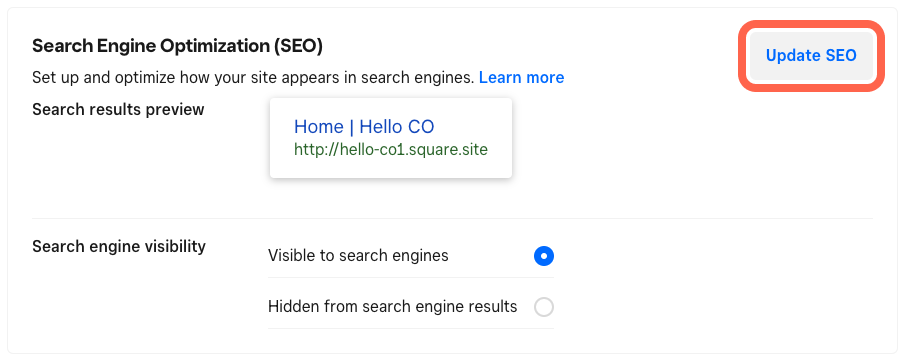Revealing the Unconventional Mediums in Google Analytics Beyond Default Settings
In the world of digital analytics, Google Analytics stands as a cornerstone for businesses seeking to recognize their on the internet presence. While default settings offer useful understandings, real deepness of understanding lies in exploring the unusual mediums that usually go undetected. By venturing beyond the surface area and diving right into the intricacies of social networks information, email campaign performance, reference website traffic sources, straight web traffic patterns, and custom-made network collections, a treasure of information waits for those happy to embrace a more nuanced approach. What lies below these unconventional tools may just redefine exactly how companies regard and plan their on the internet efforts.

Leveraging Social Media Insights
Occasionally forgotten, yet immensely important, is the technique of leveraging social media sites understandings within the world of Google Analytics. By integrating data from platforms like Facebook, Twitter, Instagram, and LinkedIn right into Google Analytics, companies can gain a deeper understanding of their target market and the performance of their social media campaigns.
Via this assimilation, online marketers can track and examine user actions on their website that originates from social media sites platforms. They can recognize which social media sites networks are driving the most traffic, which material is reverberating with the audience, and which projects are converting the most leads. This understanding permits data-driven decisions to maximize social networks techniques and improve overall advertising and marketing efficiency.
Furthermore, by combining social media understandings with Google Analytics, companies can create extra targeted and personalized projects - what is not considered a default medium in google analytics. They can use group information, passions, and on the internet habits gathered from social media sites to refine their target market division and supply customized messages that resonate with certain client teams. This targeted strategy can cause greater engagement, enhanced conversions, and eventually, improved return on financial investment
Revealing Email Campaign Performance
Discovering Email Campaign Efficiency includes examining essential metrics and performance signs to assess the performance of e-mail marketing efforts. When diving into email campaign performance, it is vital to analyze metrics such as open rates, click-through prices, conversion rates, and unsubscribe prices. Open prices show the percent of recipients that opened the email, providing understanding into the performance of subject lines and sender names. Click-through prices measure the percent of receivers that clicked web links within the e-mail, showing involvement levels. Conversion prices track the percent of receivers that finished a wanted activity after clicking on a link in the email, such as authorizing or making an acquisition up for a newsletter. Unsubscribe rates highlight the number of receivers that opted out of receiving further e-mails, dropping light on email content quality and relevance. By assessing these metrics, marketers can fine-tune their e-mail projects for better involvement and performance.
Studying Reference Website Traffic Sources
After evaluating the efficiency of e-mail campaigns with key metrics such as open rates and conversion rates, the next vital step is assessing recommendation website traffic sources in Google Analytics to understand where web site site visitors are coming from and exactly how they interact with the site. Reference web traffic resources refer to the internet sites that route users to your website via clickable links. By delving into this information, services can gain understandings into which exterior systems are driving traffic to their website, whether it be social media systems, companion websites, or online directory sites.
Examining referral traffic can give valuable info on the performance of exterior advertising and marketing initiatives and collaborations. It assists companies determine high-performing reference resources that contribute substantially to web site traffic and conversions. By recognizing the habits of site visitors coming from various recommendation sources, companies can customize their advertising and marketing techniques to optimize involvement and conversions. Google Analytics uses detailed reports on reference website traffic, permitting services to track the efficiency of each recommendation source properly and make data-driven decisions to enhance their on the internet existence.
Discovering Direct Web Traffic Patterns
Discovering the direct traffic patterns in Google Analytics gives valuable insights into user actions and the efficiency of campaigns - what is not considered a default medium in google analytics. Direct website traffic refers to site visitors who come down on a website by directly keying the URL right into their web browser, making use of book markings, or clicking untagged links. Recognizing direct website traffic patterns can aid marketing professionals assess the effect of offline advertising efforts, brand name acknowledgment, and the performance of word-of-mouth referrals
By delving into straight web traffic data, companies can reveal important information concerning individual intent and brand name commitment. Examining the habits of direct site visitors, such as the pages they go to, the time spent on site, and the conversion price, can supply a deeper understanding of customer interaction and the overall performance of the site in transforming visitors into consumers.
Moreover, tracking straight traffic patterns gradually permits companies to recognize patterns, seasonality effects, and the success of specific projects or promotions in driving direct visits. This details can then be used to refine marketing original site strategies, optimize internet site content, and enhance the general user experience to make the most of conversions.
Using Custom-made Network Groupings
Using custom network groupings in Google Analytics permits businesses to categorize and assess their internet site traffic based on certain criteria, giving valuable insights for maximizing marketing strategies. Personalized network groups enable firms to produce their very own customized groups of traffic resources, such as social media sites, natural you can find out more search, e-mail campaigns, and recommendation traffic. By defining these collections, organizations can acquire a much deeper understanding of just how various advertising channels contribute to their site web traffic and conversions.
This attribute is particularly beneficial for services with varied marketing methods throughout different platforms. A business running both paid and organic social media projects can distinguish in between the two to examine their individual performance properly. Additionally, custom-made network collections can aid recognize any neglected or ignored website traffic sources that may be driving beneficial engagement.
Verdict

By venturing beyond the surface and diving right into the intricacies of social media information, email project performance, recommendation read here web traffic resources, direct web traffic patterns, and customized channel groups, a prize chest of information waits for those ready to accept a much more nuanced method. They can identify which social media channels are driving the most traffic, which material is resonating with the target market, and which projects are transforming the most leads.After assessing the efficiency of e-mail campaigns through essential metrics such as open rates and conversion rates, the following vital action is assessing referral website traffic sources in Google Analytics to recognize where site site visitors are coming from and just how they connect with the website. Personalized network groups enable firms to develop their very own customized collections of traffic resources, such as social media, natural search, e-mail campaigns, and recommendation website traffic. By leveraging social media insights, revealing e-mail campaign performance, examining referral traffic resources, exploring straight traffic patterns, and using personalized network collections, marketing experts can gain important insights into their on-line presence.